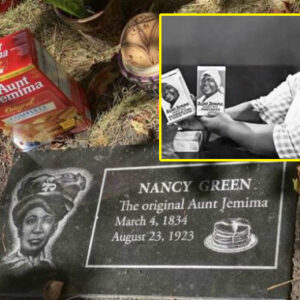Aunt Jemima’s real name, likeness etched on her tombstone, not pancake box
Years ago, my wife and I would take Johnny and Skeeter Bussard up to Grantsville to partake of the buckwheat pancakes at the Casselman Inn. Buckwheat pancakes were OK, but for my money, Aunt Jemima’s pancakes were a whole lot better.My Grandmother Gen would often make Aunt Jemima pancakes, and I actually liked mine a little over-cooked because the burnt Aunt Jemima’s pancakes with syrup had a taste like no other.
As you may have heard, the picture of Aunt Jemima was phased out by Quaker Oats in June of 2020, and all products with her picture were removed from the supermarket shelves. There were concerns that the racial stereotype of African Americans associated with Aunt Jemima’s picture was demeaning, and a reminder of those Jim Crow days. In a column by Alicestyne Turley, updated in June of this year, she provided a history of this event and controversy.
Turley, in examining the history of Aunt Jemima, determined that it began “as a minstrel show character developed during the mid-1850s by a white male in blackface dressed as a black woman, designed to entertain white audiences. Her depiction of a southern ‘Mammy’ represented the helper of the house to whites in preparing food and clothing, and the care of the children, grandchildren, nephews, nieces and friends.”
That role of “mammy” was presumably adapted and presented as an advertising tool to produce and sell this self-rising pancake mix.
Turley continues: “In 1890, a 56-year-old widowed, black woman and former housekeeper living in Chicago by the name of Nancy Green was hired to fulfill the sales position. … Many believed that Green had created the pancake recipe, and with it, the birth of the American pancake. “Whomever invented the pancake, Green was responsible for making it popular among White and Black people alike throughout kitchens nationwide. I never thought much about the picture on the box myself, but I sure enough enjoyed those pancakes and syrup on many mornings. Green was born into sIavery in Montgomery County, Kentucky, according to an ABC report in 2020 by John Schlosberg and Deborah Roberts, and after the Civil War moved to Chicago, “becoming a strong voice at the Oliver Baptist Church, the oldest black congregation.”
Marcus Hayes, one of Green’s descendants, remembers some stories of “Aunt Jemima” and shared them with Schlosberg and Roberts: As legend tells it, Green sold 50,000 boxes of the now famous pancake mix at the Chicago World’s Fair in 1893. “She was the trusted face. Back then, you know, anybody who would look at an African American woman cooking, they knew that they can trust her cooking, that she could cook,” Hayes said. Green died at age 89 after being hit by a car in Chicago in 1923 and was buried in an unmarked grave. Quaker Oats then hired Lillian Richard as the new Aunt Jemima ambassador. Richard put her small Texas community of Hawkins on the map, and it became the pancake capital of the state.
Vera Harris, a descendant of Richard, once suggested that many people did not believe real people were used to represent those pictures on the product. From the ABC report: “Descendants Harris and Hayes say that those real faces, and real stories, are in danger of being erased.” “I was, I was taken aback. I was really shocked. I knew people didn’t realize that those were real people and, you know, to phase them out, would kind of erase their history,” Harris said. When I think about all the upheaval of tearing down statutes, removing pictures and faces, attacking names of people with a questionable past, how is it possible to sanitize all of those mistakes of a nation? SIavery for sure is a significant blot on the history of this country, and there’s enough blame to go around for many. Does everyone see removing that picture of Aunt Jemima on a pancake and syrup container as the right action to correct a significant historical slant? Or do others see a missed opportunity in the rising of a “mammy” to be the bearer of something good which is embraced by all races? Certainly, it appears that Green and Richard’s descendants do not see that their relatives have been given the due credit they deserve by achieving a status of success and credibility while their unnamed pictures promoted a popular product for years.
I’m quite sure that everyone has an opinion, and although the removal of a blight might serve a real purpose to some, I suspect that many others perhaps see it another way. Green now has a tombstone over her grave. It reads:
“Nancy Green, The Original Aunt Jemima, March 4, 1834 to August 23, 1923.”

And a picture of Green is on the stone too for all to see.
Amen.
Pete Waters is a Sharpsburg resident who writes for The Herald-Mail.



